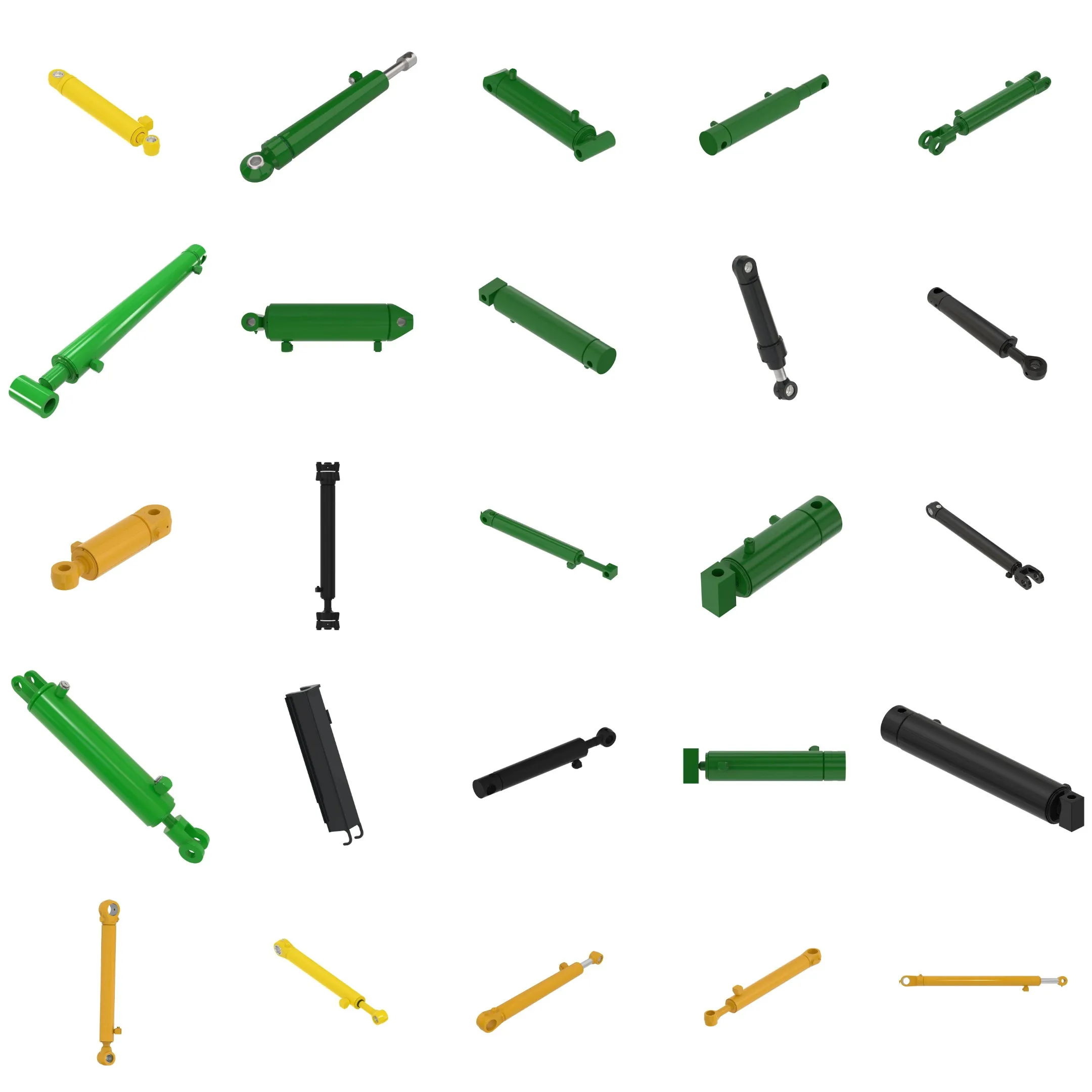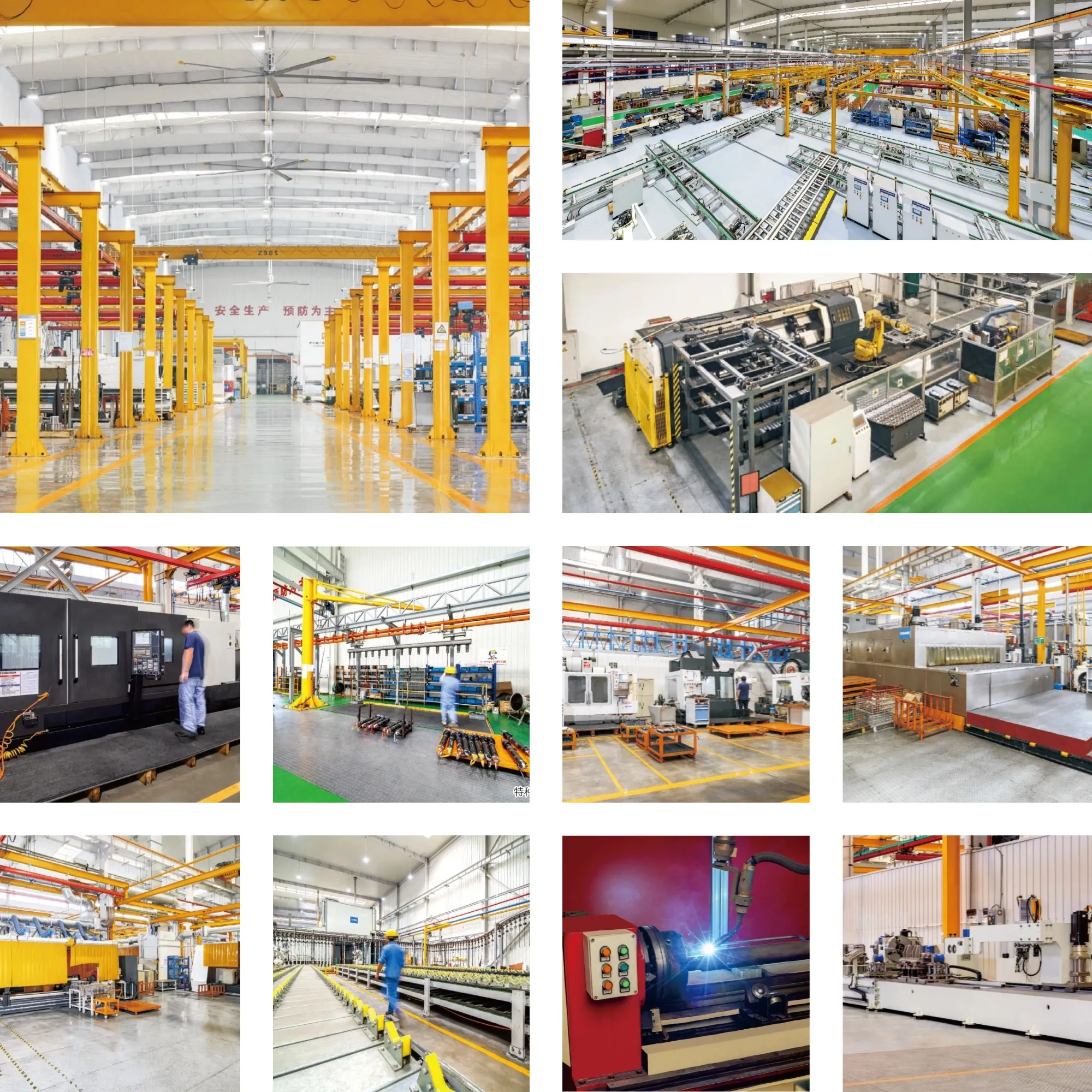Replacement Of TCA20776 Hydraulic Cylinder
Som en af producenterne, leverandørerne og eksportørerne af mekaniske produkter tilbyder vi hydrauliske cylindre og mange andre produkter.
Kontakt os for yderligere oplysninger.
Mail:sales@hydraulic-cylinders.net
Producent, leverandør og eksportør af hydrauliske cylindre.
Replacement Of TCA20776 Hydraulic Cylinder
The Replacement Of TCA20776 Hydraulic Cylinder is a crucial component used in various applications. It plays a significant role in ensuring the proper functioning of equipment. With a weight of 4.56 lb, a height of 3.5 in, and a length of 10.8 in, this hydraulic cylinder is designed to meet the specific requirements of the 1200H model.
Product Specifications and Model
- Weight: 4.56 lb
- Height: 3.5 in
- Length: 10.8 in
- Model: 1200H
Key Features
1. Improved Equipment Performance
Replacing damaged or worn hydraulic cylinders can restore the normal operational capabilities of equipment, ensuring optimal performance in various applications.
2. Enhanced Safety
Regularly replacing hydraulic cylinders reduces the risk of safety hazards caused by cylinder failures, ensuring the safety of operators and equipment.
3. Overload Protection
New cylinder designs often incorporate better overload protection mechanisms, increasing overall safety during operation.
4. Quick Installation
Modern hydraulic cylinders are designed to be easily installed and replaced, minimizing downtime and ensuring efficient equipment operation.
5. Standardized Components
Many hydraulic cylinders are standardized products, making it easier to source replacement parts from the market.
Our company specializes in producing hydraulic cylinders that perfectly replace the ones mentioned above. We offer a wide range of products that cater to diverse needs in the industry.
Applications
- Excavators: Damaged hydraulic cylinders in excavator arms or buckets can be replaced to restore normal operations.
- Cranes: Hydraulic cylinders in crane lifting arms are prone to wear and tear due to frequent lifting and lowering, necessitating regular replacement for safety.
- Tractors: Front-end loader hydraulic cylinders in tractors may experience leaks or performance decline during continuous lifting and tilting operations, requiring replacement.
- Harvesters: Hydraulic cylinders in harvesting equipment endure high pressure and fatigue, timely replacement is necessary to maintain work efficiency.
- Automated Production Lines: Hydraulic cylinders are used to control robotic arms and other automation equipment. Prompt replacement is crucial to avoid disruptions in production efficiency.
- Die-casting Machines: Hydraulic cylinders in die-casting machines may experience performance degradation under high pressure and temperature. Regular replacement ensures product quality.
- Mining Equipment: Hydraulic cylinders are used for lifting and moving heavy loads in mining equipment. Regular inspections and replacements are necessary to prevent equipment failures in harsh working environments.
- Bulldozers: Wear on hydraulic cylinders in bulldozer blades can lead to reduced pushing capacity, requiring timely replacement to maintain operational efficiency.
Maintenance Tasks
Regular maintenance is essential to prolong the lifespan of hydraulic cylinders. Here are three common maintenance tasks:
1. Regular Inspection
Perform routine inspections to identify any signs of wear, leaks, or damage in the hydraulic cylinder. Timely detection can prevent further issues.
2. Proper Lubrication
Ensure adequate lubrication by using the appropriate hydraulic oil. Proper lubrication reduces friction and enhances the performance and lifespan of the cylinder.
3. Seal Replacement and Calibration Checks
Regularly replace worn seals and conduct calibration checks to maintain optimal performance. Proper installation and alignment guidance during the installation process are essential. We recommend using suitable installation brackets to secure the cylinder.
Our company provides replacement parts and rebuilding services, extending the lifespan of your hydraulic cylinders. We prioritize customer satisfaction and offer customized solutions to meet specific requirements.
Safety Considerations and Environmental Factors
When working with hydraulic cylinders, it is crucial to prioritize safety measures. Following proper safety protocols and using appropriate safety equipment are essential to prevent accidents and injuries. Additionally, environmental factors should be considered when handling hydraulic cylinders to minimize any negative impact on the environment.
Troubleshooting and Common Issues
Hydraulic cylinders may experience various issues that affect their performance. Here are some common problems and troubleshooting tips:
1. Leakage
If you notice hydraulic fluid leakage, check the cylinder seals for damage or wear. Replace the seals as necessary, ensuring a proper fit and preventing further leakage.
2. Insufficient Power
If the hydraulic cylinder lacks power, check the hydraulic system for any blockages or leaks. Ensure proper fluid levels and pressure to restore optimal performance.
3. Slow Cylinder Movement
If the cylinder movement is slow, inspect the hydraulic lines and fittings for any restrictions or blockages. Clean or replace any faulty components to improve cylinder movement speed.
By following these troubleshooting tips, you can diagnose and resolve common hydraulic cylinder issues effectively. Implementing preventive measures can also minimize potential problems.

Design Considerations and Selection Criteria
When selecting hydraulic cylinders, several design considerations should be kept in mind:
1. Load-bearing Capacity
The hydraulic cylinder should have the appropriate load-bearing capacity to handle the intended workload without compromising performance or safety.
2. Sealing and Durability
Choosing hydraulic cylinders with high-quality sealing components, such as piston seals and rod seals made of wear-resistant materials like polyurethane or nitrile rubber, ensures durability and longevity.
3. Safety and Maintenance
Consider cylinders designed with safety features and ease of maintenance. Cylinders with finely treated cylinder body and threaded ends improve wear resistance. Regular lubrication with the correct hydraulic oil enhances longevity.
Regular inspections and proactive maintenance procedures are essential to ensure the longevity and performance of hydraulic cylinders. Adhering to proper installation, lubrication, and adjustment practices is of utmost importance. Additionally, utilizing suitable installation brackets to secure the cylinder and following recommended inspection, repair, and replacement procedures will extend the lifespan of the hydraulic cylinder.

About Our Company
We are a leading manufacturer and wholesale distributor of replacement hydraulic cylinders. Our comprehensive range of products caters to both domestic and international markets. With a commitment to professionalism, international certifications, customized services, state-of-the-art production equipment, and reliable after-sales service, we have established ourselves as a trusted name in the industry.

Author: lyl
Take a Tour of Our VR Factory:
Take a tour of our VR factory with the following
How Does Forklift Hydraulic Cylinder Work?
Hydraulic Cylinder Application:


